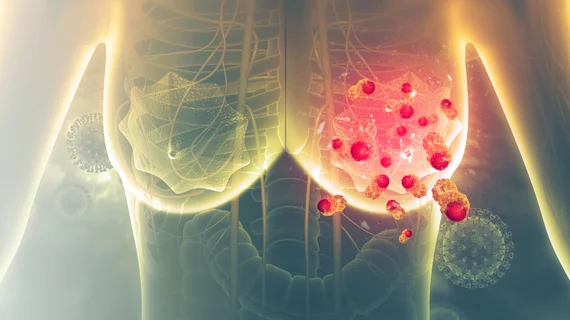Radiologists find more evidence DBT enhances breast cancer screening
Digital breast tomosynthesis detects more cancers and lowers false-negative rates during breast cancer screening compared to digital mammography, according to a new study.
Yale University School of Medicine researchers analyzed more than 380,000 exams for their retrospective study, published Tuesday in Radiology. Their findings build on prior investigations that have shown DBT to improve screening outcomes.
“With DBT, you can really feel like you’re combing through the breast tissue instead of just looking at flat pictures,” lead author Melissa A. Durand, MD, associate professor of diagnostic radiology and biomedical imaging at Yale, said in a statement.
When imaging with digital breast tomosynthesis, an x-ray camera travels in an arc over a patient’s breast, gathering images from multiple angles. Those are then processed into a near 3D image, which helps radiologists see cancers that would normally hide under overlapping tissue.
After comparing DBT scans to conventional digital mammograms, Durand et al. found screening with the former bolstered sensitivity and specificity for breast cancer, while also spotting more invasive disease cases with fewer distant metastases.
“With DBT, we show we are detecting more invasive cancers, but they are cancers with favorable prognostic criteria, which means these patients would have more treatment options,” Durand explained.
What’s more, DBT was advantageous in women with dense breasts, resulting in significantly lower recall rates compared to digital mammography.
“Together with reduced recall rates and, thus, less patient anxiety, I would anticipate that DBT will continue to move forward as the standard of care to replace regular mammography,” Durand said.
Read the entire study in Radiology here.

